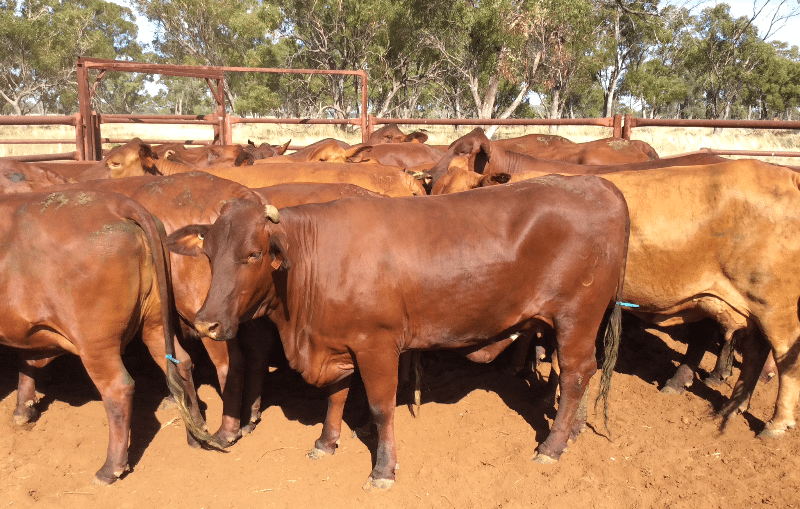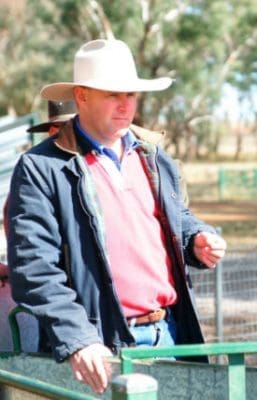
THROUGHOUT this year’s drought, one emerging trend has been the topic of mature cow size.
There are a number of causes for this trend to develop. Firstly the on-going impact of poor to desperate seasons across Australia has focussed many producers on the nutritional challenges in maintaining larger cows.
At the same time, the increased selection of bulls for growth and carcase weight has seen industry question the size of cattle being produced. As reported in Beef Central following this year’s Angus forum in Albury, keynote speakers highlighted the challenges for processors and retailers from increasing carcase size.
At the same conference, attendees heard from New Zealand’s Professor Dorian Garrick of the increase of mature cow sizes over the past 30 years. Professor Garrick, from Massey University, suggested mature cow weights had increase by 100 to 150kg since the 1970s.
As reported earlier by Beef Central, Professor Garrick told the Angus Conference the increase in cow size comes with additional costs for producers. He told the conference, “The cost of feeding the average Angus daughter in 2017 was $57/head more than the average Angus daughter in 1980.”
Increasing mature cow size is one of the outcomes for many producers continuing selection for growth. While increasing growth rate is an important contributor to producing cattle that can potentially achieve higher carcase weights at earlier ages, there are other outcomes to impact on the herd. The most obvious has been increased birth weights and larger mature cows.
While some producers have been able to accommodate an increase in mature cow size, the current drought has exposed many producers to the new reality that their feed reserves are insufficient to meet a herd of larger mature cows.
Working with producers on their feeding programs highlights the impact increased cow size has on feed ration amounts.
As a typical example, an increase of 100kg liveweight, from 500kg to 600kg, will see producers needing to increase their ‘as fed’ ration weight by 15pc. The implication for many producers has been to see their feed reserves declining at a faster rate than budgeted for.
In some cases it has resulted in cattle being underfed and losing weight at a rate that was unexpected. In either scenario, producers were forced to make new decisions on the management of their cows, at time much earlier than they expected.
Understanding ‘frame creep’
Given the influence of sires used within herds extends over three generations, it’s likely that mature cow size in many herds may continue to increase. I’ve seen this increase described as ‘frame creep’, where mature cow size gradually increases over generations as a result of past genetic decisions, and the tendency at selection to choose larger females as replacements.
Having observed the gradual increase in mature cow size in northern NSW for the past two decades, I am fairly sure the increasing trend is a result of ‘frame creep’, rather than a specific approach by producers.
However the flow-on impact has implications that industry is now grappling with, as focus is bought on both cow maintenance needs in drought and carcase weights for processors.
It is also important to highlight the economic impact ‘frame creep’ has over time within a herd. As highlighted earlier, the cost to maintain an Angus female has increased over the last 30 years by roughly $1.80/year.
Other examples highlight that increasing mature cow size fails to increase returns per hectare.
Some interesting More Beef from Pastures work by Dr John Webb-Ware demonstrated that at low stocking rates, larger cows can be reasonably profitable, but once average or higher stocking rates are achieved, there is no real economic advantage to cows exceeding a 550kg mature weight.
The inclusion of Mature Cow Weights within the EBVs for most breeds offers an opportunity for producers to consider and select for mature weights most appropriate for their country, and carrying capacities.
A key feature of BreedObject Version 6 is the creation of Indexes which include consideration of maintenance requirements for cows, and this will offer producers increased opportunity to select more appropriately-suited genetics.
While there may be a natural inclination to attempt to select larger animals for replacements, it is important to consider how much more feed larger animals demand and the impacts this has in nutritionally challenging times, as well as on the efficiency of the breeding herd in general.

Alastair Rayner
Alastair Rayner is the Principal of RaynerAg, an agricultural advisory service based in NSW. He regularly attends bull sales to support client purchases and undertakes pre-sale selections and classifications. He can be contacted here or through his website www.raynerag.com.au
